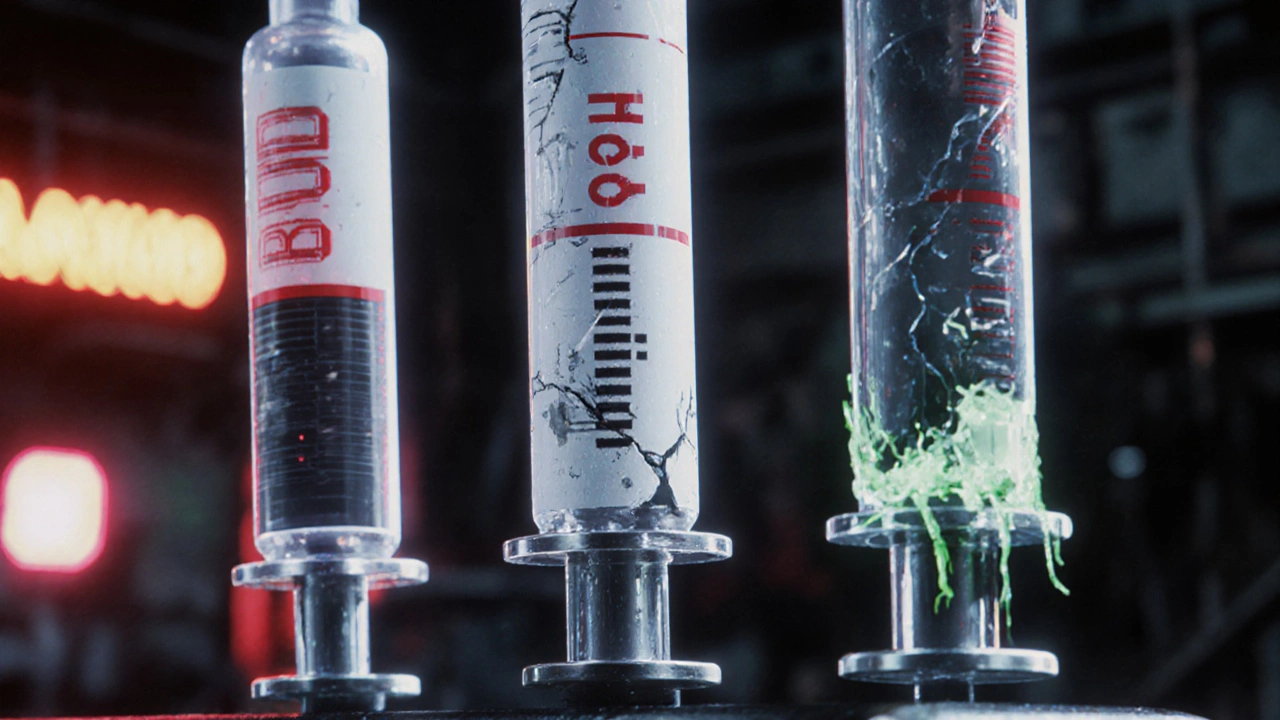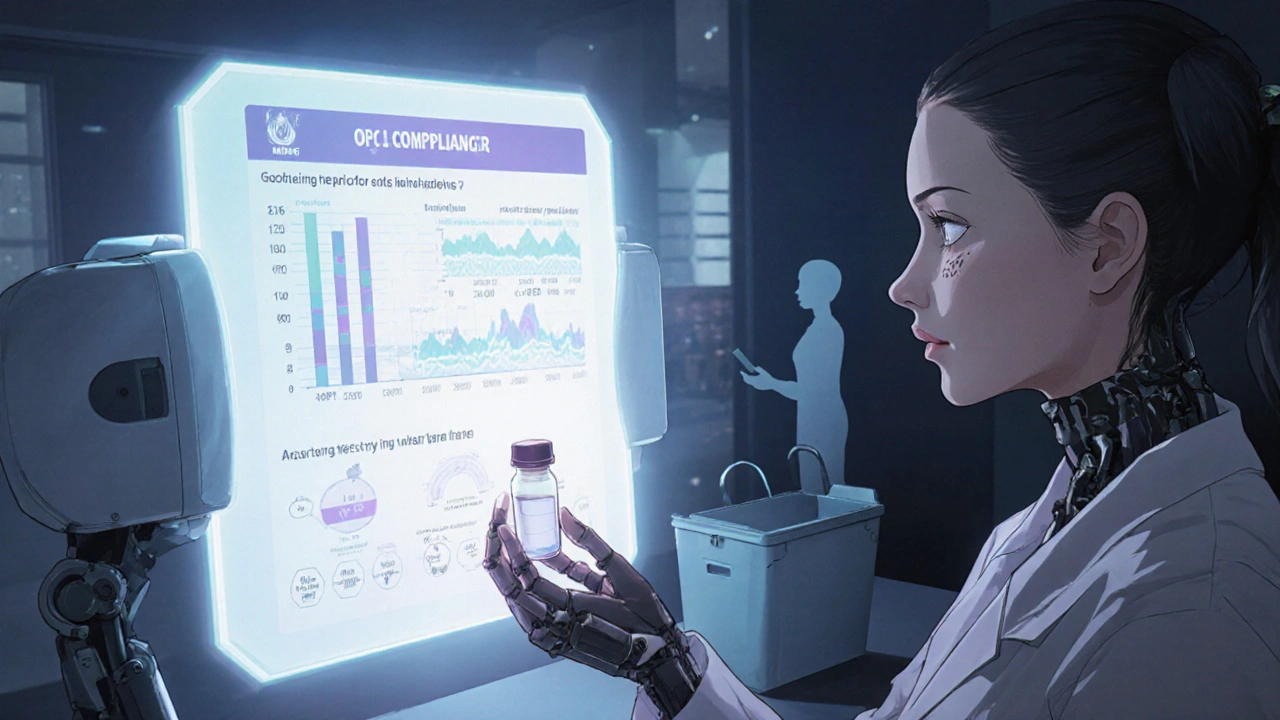When a pharmacist hands you a bottle of compounded medication, it doesn’t come with a shiny FDA expiration date like the pills you get at a regular pharmacy. Instead, it has a beyond-use date - a label that tells you when the medicine is no longer safe or effective to use. This isn’t just paperwork. Getting it wrong can mean taking a drug that’s lost its power, or worse, one that’s grown harmful bacteria. Understanding how to read and trust this date isn’t optional - it’s critical for your safety.
What Exactly Is a Beyond-Use Date?
A beyond-use date (BUD) is the last day a compounded medication should be used. It’s set from the day the drug was mixed, not from when it was dispensed. Unlike mass-produced drugs that go through years of stability testing before hitting shelves, compounded medications are made in small batches, often customized for a single patient. That means there’s no manufacturer running controlled tests to prove the drug lasts 12 months. So, the pharmacy has to figure it out - and they have to do it right.The rules come from the United States Pharmacopeia (USP), specifically Chapter <797>. This isn’t a suggestion. It’s a legal standard in most states. The BUD isn’t arbitrary. It’s based on science: how fast the active ingredient breaks down, whether microbes can grow in the mixture, what kind of container it’s in, and how it’s stored. If any of those factors change, the BUD changes too.
Why BUDs Are Different from Expiration Dates
You might think a BUD is just a fancy name for an expiration date. It’s not. FDA-approved drugs have expiration dates based on real-world data collected over years. A bottle of amoxicillin might say “expires 12/2026” because the manufacturer tested it under heat, light, and humidity for that entire time - and proved it still works.Compounded drugs don’t have that luxury. A pharmacist might mix a liquid version of a pill for a child who can’t swallow tablets. Or they might remove a dye that causes an allergic reaction. These small changes can dramatically affect how stable the drug is. A 2023 study in the Journal of Pharmacy Practice found that changing the pH of a compounded solution made it degrade 3.7 times faster than the original commercial version. That means a BUD that looks similar to an expiration date might actually be weeks, not months or years.
And here’s the kicker: syringes, plastic bags, and even some glass vials aren’t designed for long-term storage. The FDA has warned that syringes used in compounding are not approved for storing medication. Yet, a 2022 survey found that over 40% of retail pharmacies still assign BUDs to syringe-stored drugs using data from vials. That’s like using a paper cup to store gasoline and assuming it won’t leak.
How Pharmacists Actually Set a BUD
Setting a BUD isn’t guesswork. It’s a five-step process, backed by the American Society of Health-System Pharmacists (ASHP):- Identify every ingredient - including the active drug, solvents, preservatives, and even the container material.
- Classify the risk level - low, medium, or high - based on how sterile the process was and whether the formula contains water. Water invites bacteria.
- Check the manufacturer’s data - if the original drug has stability info, that’s a starting point.
- Look up validated literature - databases like the International Journal of Pharmaceutical Compounding have over 14,700 tested formulations. But only about 30% of pharmacists use them regularly.
- Apply professional judgment - if the data is weak, the BUD must be shorter. No exceptions.
For example, a low-risk sterile preparation (like a simple saline flush) might have a BUD of 48 hours at room temperature. A medium-risk one - say, a hormone cream mixed with a preservative - might last 30 days if refrigerated. But if that same cream is stored in a plastic tube instead of glass, the BUD could drop to 14 days because the plastic absorbs the active ingredient.

The Science Behind the Clock
The gold standard for setting a BUD is a stability-indicating method - a lab test that can detect even tiny changes in the drug’s chemical structure. High Performance Liquid Chromatography (HPLC) is the most common tool. But here’s the problem: only about 37% of compounding pharmacies use HPLC methods that are properly validated. That means over 60% of BUDs might be based on assumptions, not hard data.Forced degradation studies - where the drug is exposed to heat, light, or acid to speed up aging - are required. But they must be done on the full formulation, not just the active ingredient. A 2021 study showed that excipients (inactive ingredients) can change how fast the drug breaks down by up to 63%. That’s not a small error. It’s a safety gap.
And it’s not just about chemistry. Microbial growth is a silent killer. A compounded liquid that’s left at room temperature for too long can become a breeding ground for bacteria or fungi. That’s why water-based formulas have tighter limits. USP <797> says high-risk preparations - like IV bags with antibiotics - can’t have a BUD longer than 24 hours unless they’re tested and proven safe.
Where Things Go Wrong
The biggest mistakes happen when pharmacists stretch the truth to save time or money. Here are the top three errors:- Using commercial expiration dates as BUDs - just because a pill lasts 2 years doesn’t mean the liquid version does.
- Ignoring container type - plastic containers can leach chemicals or absorb drugs, making them less effective.
- Extending BUDs without testing - if a formula lasts 14 days in the literature, some pharmacists assume it’s safe for 30. That’s dangerous.
A 2022 FDA report found that 28.6% of violations at compounding pharmacies were due to inappropriate BUD extension. In one case, a pharmacy gave patients IV solutions with a 7-day BUD when the science only supported 24 hours. The result? A recall of 1,247 products after patients developed infections.
Even worse, many pharmacists don’t document their reasoning. As of 2023, 47 states require written justification for every BUD. But audits show nearly half of all records are incomplete or missing. That’s not just bad practice - it’s a legal risk.

What You Should Do as a Patient
You don’t need to be a chemist to protect yourself. Here’s what to ask for:- Ask for the BUD label - it should be clearly printed on the container, with the date and time the medication was compounded.
- Check storage instructions - is it supposed to be refrigerated? Kept in the dark? Used within 24 hours? Follow them exactly.
- Don’t use it past the date - even if it looks fine. Cloudiness, color change, or strange odor are red flags - but even if it looks perfect, it might not be safe.
- Ask your pharmacist how they set the BUD - if they can’t explain it, get a second opinion.
If you’re getting compounded meds regularly - for hormone therapy, pain management, or rare conditions - keep a log. Note the BUD, the date you started using it, and any side effects. That data helps your pharmacist improve their process.
The Future of BUDs
The pressure to get this right is growing. In December 2023, USP updated its rules to require direct stability testing for any BUD longer than 30 days. That’s going to hit nearly a quarter of all compounded preparations. It’s expensive - testing costs pharmacies millions - but it’s necessary.Technology is helping. Some pharmacies are now using real-time monitoring systems that track temperature, light exposure, and even chemical changes in the bottle. One pilot study showed a 47% drop in BUD errors after installing these systems.
And the demand for compounded drugs is rising. By 2030, nearly one in five prescriptions could be compounded, up from less than 8% today. That means more people relying on these dates. More people depending on pharmacists to get it right.
There’s no room for shortcuts. A BUD isn’t a suggestion. It’s a safety line - drawn by science, enforced by regulation, and meant to protect you.
Can I still use a compounded medication if it’s one day past its beyond-use date?
No. Unlike FDA-approved drugs, compounded medications don’t have a grace period. Once the beyond-use date passes, the drug may have degraded, lost potency, or become contaminated. Even if it looks normal, there’s no way to know if it’s still safe. Using it could lead to treatment failure or infection. Always dispose of it properly after the BUD.
Why do some compounded medications have longer BUDs than others?
It depends on the risk level, ingredients, and storage. Low-risk preparations - like simple saline solutions - can last up to 48 hours at room temperature. Medium-risk ones, such as hormone creams, may last up to 30 days if refrigerated. High-risk preparations, like IV antibiotics, are limited to 24 hours unless proven safe by testing. Water-based formulas, non-sterile containers, or unstable ingredients all shorten the BUD.
Does refrigeration always extend the beyond-use date?
Not always. Refrigeration slows chemical degradation and microbial growth, but only if the formulation is stable in cold temperatures. Some ingredients, like certain oils or emulsions, can separate or become unstable when chilled. Always follow the specific storage instructions on the label. If it says "refrigerate," do it. If it says "store at room temperature," don’t refrigerate - it could make things worse.
Can I trust a beyond-use date based on published literature?
Only if the literature matches your exact formula - same drug, same strength, same solvent, same container. Even small differences - like using propylene glycol instead of ethanol - can change stability by up to 58%. Most published studies don’t account for these variables. Pharmacists should use literature as a starting point, not a final answer. When in doubt, test.
What should I do if my pharmacy won’t explain how they set the BUD?
Find another pharmacy. A professional compounding pharmacy should be able to explain their BUD assignment clearly, using USP <797> guidelines. If they can’t or won’t, it’s a red flag. You’re paying for a custom medication - you deserve to know it’s safe. Ask for documentation. If they refuse, consider switching to a pharmacy accredited by the PCAB (Professional Compounding Centers of America).
If you’re using compounded medications, treat the beyond-use date like a stop sign - not a suggestion. It’s the last line of defense between you and a potentially harmful drug. When in doubt, throw it out.

Rebecca Cosenza
Just throw it out. No exceptions. I don't care if it looks fine.
swatantra kumar
Bro, I just got my hormone cream with a 30-day BUD... but the bottle was plastic and stored at room temp 😅. Guess I'm gonna be that guy who dies of a fungal infection. Thanks, capitalism.
Dave Wooldridge
They're lying to you. Every single one of them. The FDA, USP, the 'pharmacists'-it's all a cover. They want you dependent on their magic potions because the real cure is already banned. That's why the BUDs are so short. They don't want you to heal. They want you to keep coming back. I've seen the documents. The syringes? They're laced with tracking nanobots. You think that's a coincidence? 😈
Matthew McCraney
how come no one talks about how the big pharma lobby controls the usp?? they made the rules so small compounding shops go under. i had a friend who got a budesonide cream that lasted 60 days in the fridge-no issues. but the law says 30? yeah right. they just wanna make us buy their overpriced factory pills. and dont get me started on the plastic containers. my grandma's meds came in glass, now its all cheap ass plastic. its a scam. i trust my grandma's recipe over some lab rat with a pcr machine.
serge jane
It's interesting how we treat the beyond-use date like an absolute when in reality it's a probabilistic boundary drawn from incomplete data. We're assigning moral weight to a statistical estimate. We say 'don't use it after' as if the molecule suddenly becomes evil at midnight. But chemistry doesn't care about calendars. The real issue isn't the date-it's our collective refusal to accept uncertainty. We want a label that says 'safe' or 'unsafe' but life doesn't work that way. The pharmacist's judgment is the real variable here. And if they're not documenting their reasoning, that's not negligence-it's epistemological laziness.
Nick Naylor
!!!USP CHAPTER 795 IS NOT A SUGGESTION!!! IT'S A FEDERAL STANDARD!!! IF YOU'RE USING PLASTIC SYRINGES FOR STERILE COMPOUNDS YOU'RE COMMITTING CRIMINAL NEGLIGENCE!!! AND DON'T EVEN GET ME STARTED ON THE FACT THAT 47% OF PHARMACIES DON'T DOCUMENT THEIR BUD JUSTIFICATIONS!!! THIS ISN'T A BLOG POST-THIS IS A PUBLIC HEALTH CRISIS!!! WE NEED MORE AUDITS!!! MORE PENALTIES!!! MORE ACCOUNTABILITY!!! THIS IS WHY AMERICA IS FALLING APART!!!
Brianna Groleau
I come from a country where we don't even have compounding pharmacies, and I just read this whole thing with my heart in my throat. I have a cousin who takes custom meds for epilepsy-she's 7. She's alive because someone took the time to mix the right dose, in the right container, with the right date. I can't imagine what it's like to live in a system where that safety is treated like an afterthought. I just want to hug every pharmacist who actually reads the literature. And I want to scream at the ones who don't. This isn't just science-it's love. It's care. It's someone saying, 'I see you, and I won't let you suffer because I was too lazy to check the container.' Please, if you're reading this: don't cut corners. Not for money. Not for time. Not for convenience. People's lives are in your hands.
Rusty Thomas
Okay so I just called my pharmacy and asked how they set my BUD and they said 'oh we just use the commercial expiration date' and I nearly had a stroke. Like, what? You're telling me you're giving me a hormone blend that's been sitting in a plastic vial since 2021 and you're calling it safe because the original pill had a 2026 date? I'm not even mad-I'm just impressed. You guys are like culinary artists who use expired milk and call it 'artisanal cream.' I'm switching to PCAB. And I'm posting this on every forum I can find. This is not okay. This is not acceptable. This is a horror movie waiting to happen.